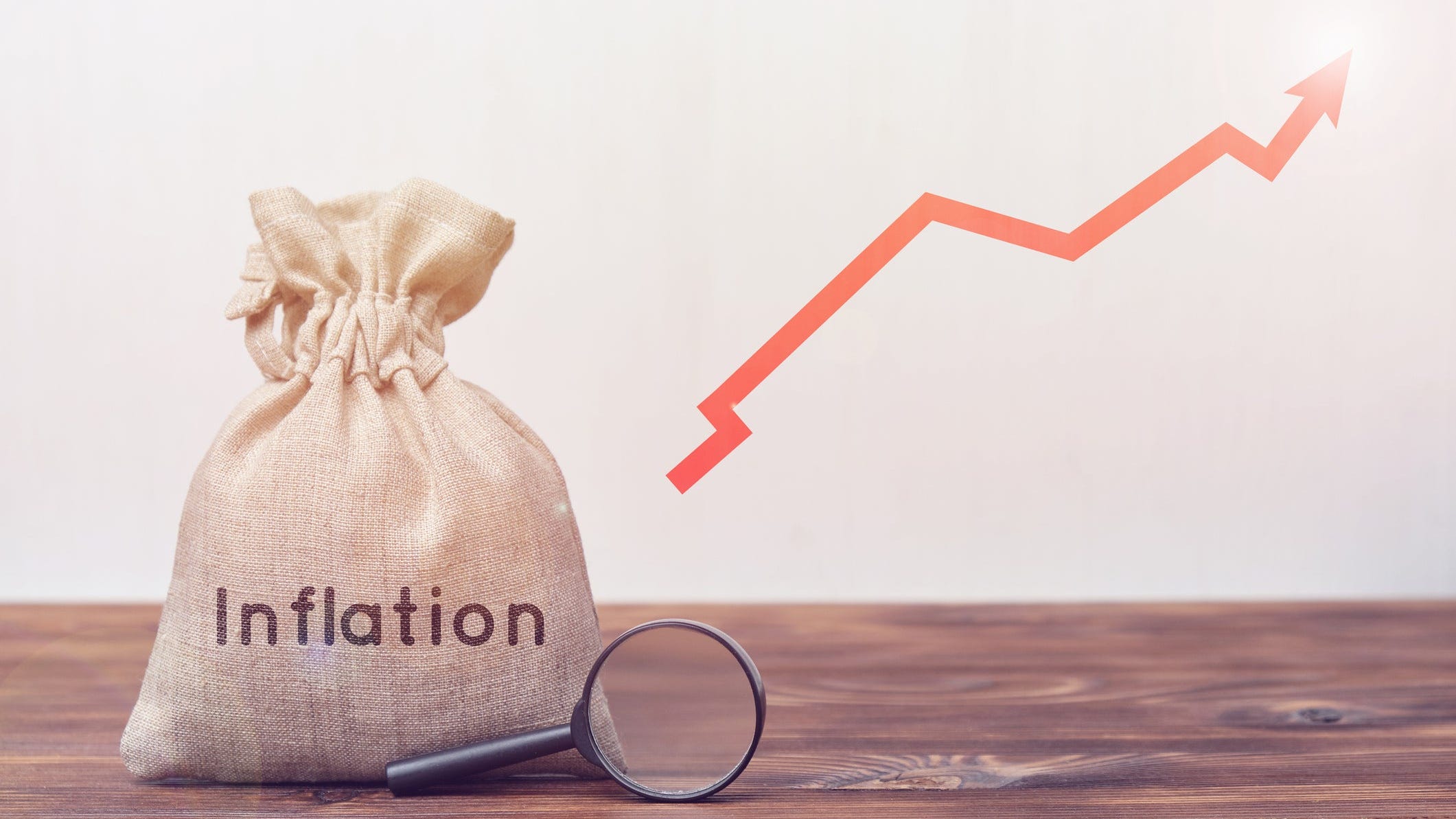Surging Inflation: Where to Hide your Money During High Inflation
During periods of surging inflation, prices of all commodities go up and cause money to lose value. The currency depreciates because consumers now need more money to buy the same bundles of goods as before. Mild, stable, and consistent inflation is beneficial to the economy as it maintains price stability and maximum employment. An annual inflation rate of 2% is considered healthy for the economy.
A rapid price jump places a burden on consumers as they find it hard to access essential commodities like food, housing, gas, and travel, among others. On the other hand, meager inflation is not good for the economy as it discourages production due to low prices.
The current skyrocketing inflation has been blamed on a number of factors.
First, the Federal Reserve printed more money for the economic stimulus packages – one of the government’s antidotes to the pandemic.
The economic stimulus packages are said to have caused a 30% increase in money supply In April 2021, with the M2 money supply standing at $20.11 trillion. This huge pump of free money into the economy led to a decrease in consumer purchasing power as there was more money in the economy chasing very few goods.
Secondly, there is an increase in consumption as the COVID-19 pandemic wanes away. The pandemic caused supply chain disruptions in the global market. The lockdowns also meant that people were consuming less. All consumption plans that had been put on hold during the pandemic are now coming on board as the pandemic fades away, causing a spiral increase in consumption.
Thirdly, the war in Ukraine has seen the U.S. and European countries place sanctions on Russia for invading its neighbor, including an embargo on Russian oil and gas. Russia is the largest oil supplier to the global market and only ranks second in crude oil export behind Saudi Arabia.
The cut-off of Russian oil has left a supply gap in the global market and increased the prices of oil products.
How to Protect Your Money During High Inflation?
A surging inflation depreciates the country’s currency and devalues people’s savings and investments. However, during times of inflation, not all forms of savings and investments are affected the same. Some are able to withstand the pressure, while others can adjust with time. Below are ways to protect your money when inflation rises.
1. Treasury Inflation-Protected Securities
Treasury Inflation-Protected Securities are special types of securities issued by the U.S Treasury and whose principal value is indexed to the prevailing rate of inflation.
This means during high inflation, the principal value is raised up, and during low inflation, the principal value is lowered. When inflation goes up, the interest paid on TIPs also goes up, and during deflation, the interest paid on TIPs by the government drops,
TIPs, like traditional Treasury bonds, are backed by a government assurance to pay upon maturity. They are some of the safest forms of investments as they are covered from inflation and come with a guarantee to pay upon maturity. They can also be a good way to diversify your investment portfolio and better manage risks.
TIPs help protect investors against sudden unexpected spikes in inflation.
2. Real Estate
Real estate is one of the few sectors that tend to be immune to the impacts of surging inflation. In fact, the sector performs well when prices go up as landlords can charge more in rent charges. There are various forms of real estate investment that those wishing to hide their money from surging inflation can take advantage of.
Rental properties offer continuous advantages like tax advantages, passive income, and the ability to leverage money from other people.
Real estate investment trusts or REITs are also a common form of real estate investment. Equity REITs directly own and operate different forms of property, including residential, industrial, and commercial property. On the other hand, mortgage REITs, or mREITs, invest indirectly in real estate through real estate secured loans.
You can also choose to own a home as homeowners are covered from inflation. In addition, homeowners get to pay less monthly mortgage due to high inflation.
3. Commodities
Commodities can be anything with an inherent value, including crude oil, natural gas, precious metals like copper, tree products like lumber, and even grains like coffee and sugar. These commodities are usually needed on a daily basis making their demand and price much more stable.
The pricing of commodities adjusts based on market principles of demand and supply. Instead of buying actual commodities, you can simply invest in commodities through commodity ETFs and mutual funds. The most common form of commodity ETFs and mutual funds are commodity index funds.
Like any other index, the commodity index fund can be bought through a brokerage and usually have a market index that represents and tracks one commodity, a group of related commodities, or the entire commodity market.
4. High-yield Reward Checking Accounts
A high-yield reward account is a free checking account that does not attract monthly service charges. Account-holders are rewarded with higher interest rates when they meet specific monthly requirements.
There are close to 1,200 banks and credit unions in the U.S. that offer high-yield reward checking accounts, with over 150 of these offering at least 3% on deposits of up to $10,000, which is way more than what ordinary savings accounts offer.
Just like other accounts, high-yield reward accounts usually come with some conditions like requiring regular use of your debit card.
5. Gold & Precious Metals
From time memorial, gold has been known as a standard measure of value and secure store of wealth. From a surface view, these precious metals may fall under the category of commodities. However, over time, gold and other precious metals have acquired a special place in protection against inflation.
Due to their inherent value and stability, precious metals like gold were the pioneer currency, and they were used in the form of coins before central banks invented paper money and pegged their value to that of gold.
While typical metal currencies may no longer be in circulation, precious metals are usually a fallback anchor and offer a soft landing ground during periods of high inflation and dwindling trust in paper money. During high inflation, investors and precautionary money holders rush to convert their money, and other investment holdings rush to convert them to gold.
6. Growth-Oriented Stocks
In addition to “real” assets, stock markets are also effective in protecting from high inflation. Growth-oriented stocks are attractive stocks whose potential comes from their ability to gain in price as opposed to income-oriented stocks that are attractive due to their high dividend payments.
There are companies and industries that have inelastic demand curves and are able to adjust pricing alongside inflation without affecting demand. Such companies and industries tend to safely navigate the inflationary periods. During inflationary periods, food companies, for instance, can pass on the increased prices to consumers without affecting demand.
These are mainly essential products and services, including;
- Health care
- Food
- Technology
- Building materials
- Energy
The ability to raise prices under inflation without affecting demand and profit also allows the valuation and stock price to grow even during high inflation.
7. Investment-Grade Art
Investment-Grade Arts re specific art objects that can hold value and even appreciate in value. Initially, investment in art was art due to the difficulty of possessing entire pieces of art. Currently, investment in art is much easier due to fractional ownership.
Investment-grade art comes in many forms, including masterpieces, blue-chips, mid-career living artists, and emerging artists.
For investors seeking to hide their money in art investments during surging inflation, common places to invest include art auction houses, art dealers, and direct art sales.
8. Cryptocurrency
Cryptocurrencies have emerged as the new gold, commonly called the “digital gold,” and are very effective in protecting against inflation due to their limited and fixed supply. As opposed to fiat currency, whose supply can be manipulated by the government, cryptocurrencies are immune to manipulation. While more research is needed to ascertain the effect of hyperinflation on cryptocurrencies, they are theoretically known to be rigid against high inflation.
Final Word
During surging inflation, the financial landscape becomes more slippery and unpredictable. Investors can protect their money by opting for safer investment options. These options can allow you to continue earning money even during high inflation. However, some of the listed options need to be used with care and caution as they carry some levels of risks.






